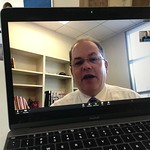To address our unprecedented global and immediate need for access to reading and research materials, as of today, March 24, 2020, the Internet Archive will suspend waitlists for the 1.4 million (and growing) books in our lending library by creating a National Emergency Library to serve the nation’s displaced learners. This suspension will run through June 30, 2020, or the end of the US national emergency, whichever is later.Although this archive uses the word "national," it is available to everyone around the world.
Okay...so I missed that announcement, but then articles like these caught my attention:
- ‘Emergency’ Online Library Draws Ire of Some Authors (New York Times)
- Internet Archive accused of using Covid-19 as 'an excuse for piracy' (the Guardian)
- Authors, Publishers Condemn The 'National Emergency Library' As 'Piracy' (NPR)
While controlled digital lending is not new, this is likely the first time so many news outlets and people have taken note of it or been impacted by it! (Congratulations!)
I'm glad to see many people - not just the Internet Archive - release content during this period, when people are being asked to stay home. The music, the films, the books, etc. are helping us all survive social distancing and stay at home orders. Some of the content releases have been bold, like the Internet Archive, while others have been low risk, like unlocking subscription content. With all of content, I think the "couch potatoes" will get through the pandemic and be a little smarter when it's all over.





